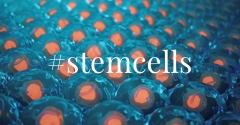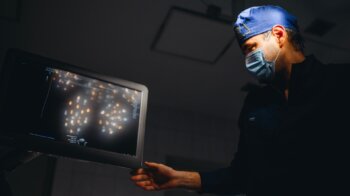During the first stage of phlebectomy, a thermal effect is applied to the endothelium (the inner layer of the vessel wall) of the vein. Due to the high laser heating temperature (up to 150 degrees), the blood coagulates and the vein closes. The second stage of the operation includes microphlebectomy – surgical removal of veins in the legs through two-millimeter punctures.
Varicose veins are a pathological expansion of the saphenous veins of the lower extremities, accompanied by valve failure and impaired blood flow. Varicose veins have six stages of development.
Beginning varicose veins (first stage) do not require surgical intervention, because manifests itself asymptomatically and is characterized by the appearance of telangiectasia and reticular veins (stars and meshes of a bluish tint). If the patient wishes, in the first stage of varicose veins, sclerotherapy is performed, which allows sclerosis of the affected vessel. The second stage is characterized by the presence of dilated veins, which are visible visually. In the third stage of varicose veins, swelling of the legs is observed, mainly increasing in the second half of the day, completely or partially disappearing after rest. At the fourth stage of varicose veins, trophic disorders of skin pigmentation and lipodermatosclerosis develop. The fifth stage of varicose veins is manifested by a healing trophic ulcer of the leg or foot. The sixth stage of varicose veins is characterized by the presence of an open, acute and non-healing trophic ulcer.
Endovenous laser coagulation is performed only on those veins that are invisible to the naked eye and are visualized exclusively under ultrasound control. After the operation, the coagulated vein remains in the body, but it does not have any negative consequences for the body and is visually invisible.
Indications and contraindications for laser vein removal for varicose veins
The indication for endovenous laser treatment of varicose veins is the presence of varicose veins, starting from the second stage of development. That is, when, according to the results of duplex scanning of the veins of the lower extremities, the diameter of the vein lumen exceeds four millimeters. Other indications for laser treatment and microphlebectomy for varicose veins are:
- the presence of varicose veins protruding above the skin;
- swelling of the legs, which increases in the evening and goes away on its own during rest;
- change in skin color of the lower third of the leg;
- the appearance of pigmentation;
- compaction of subcutaneous fatty tissue in the lower third of the leg;
- the presence of trophic disorders on the affected limb;
- the presence of a healed or open ulcer of the affected limb.
If a varicose vein becomes dense, painful and is accompanied by hyperemia (redness) of the skin over this vein, this condition is called saphenous vein thrombosis. Thrombosis requires immediate contact with a phlebologist or vascular surgeon, because can cause pulmonary embolism, which can lead to disability and even death.
Absolute contraindications to laser treatment of varicose veins include cancer and autoimmune diseases not in remission, pregnancy, lactation and infectious diseases in the acute phase of development. Relative contraindications to laser vein removal are diabetes mellitus in the stage of decompensation and atherosclerosis of the vessels of the lower extremities.

Result of laser vein removal
The result of laser treatment of varicose veins in combination with microphlebectomy is the complete removal of all varicose veins. The patient gets rid of varicose veins, swelling, pain and can again feel lightness in his legs.
For 70 days after vein removal, you may experience minor swelling in the area where the surgery was performed. Relapse after treatment of varicose veins is impossible. But if there is a predisposition, there is a risk of developing varicose veins of other (non-operated) veins.
What happens if varicose veins are not removed?
If veins for varicose veins are not removed, there is a risk of developing trophic ulcers. Unfortunately, varicose veins are an irreversible disease whose progression cannot be predicted. For some, varicose veins progress to advanced stages over decades, while for others, within a few years. In addition, the lack of timely treatment is fraught with the development of thrombosis and thromboembolism, which is a life-threatening condition and requires surgery.













 2935
2935  3 min.
3 min.


